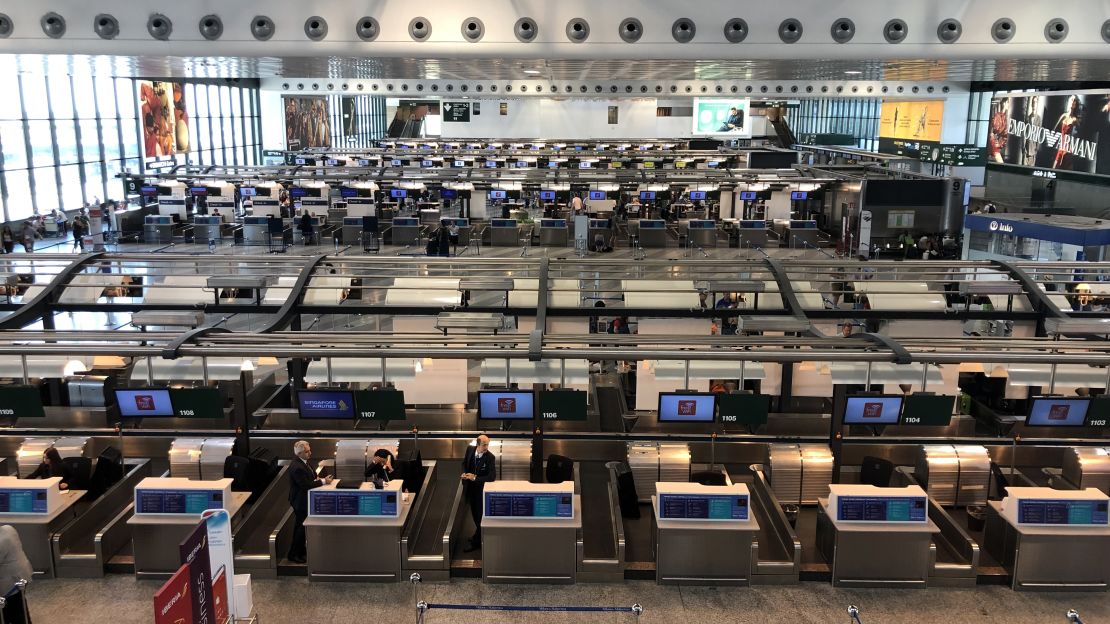With its renovations still in progress, you won’t be able to use Milan Linate Airport until late October. (Shutterstock)
Locals call Milan “the city that never stops moving.” Districts, buildings, roads and infrastructures are constantly being adapted to meet higher standards – and that includes airports.
Milan Linate Airport has shut down for three months – from July 27 to October 27 – for a renovation of the runway and commercial terminal.
At just 8 kilometers (5 miles) from the storied Duomo cathedral, buzzy fashion streets and elegant bohemian neighborhoods, Linate is the entry point for many of the city’s cosmopolitan visitors. So how will that affect travel for Milan Fashion Week (Tuesday, September 17, through Monday, September 23).
Not much, say officials.
That’s because Linate is just one of Milan’s several airports – and it services European Union/domestic Italy flights only, so travelers from outside Europe weren’t entering through Linate, anyway.
During the three-month closure, all flights are being sent to Milan Malpensa Airport, which is a significant 53 kilometers (33 miles) away from the city center.
The distance and commute cost aside, Malpensa has prepared for the extra air traffic for months, adding some intercontinental flights and reinforced hub services. Dubbed Operation Bridge, the strategy has met municipal expectations.
“Linate’s closure and the switch to Malpensa has had zero impact on air traffic,” assures Antonio Gigli, head of North Operations at Italy’s air traffic controller ENAV. “ENAV’s teamwork has ensured the punctuality and safety of all flights even during summer’s highest traffic peaks.”
‘Stress tests’

And over the past year, Malpensa Airport has undergone a series of “stress tests” to boost efficiency and crowd control as it substitutes for Linate.
Travelers at Malpensa Terminal 1 will now find 26 extra check-in stands, five new security lines, eight extra e-passport check booths and five new boarding gates, according to Alessandro Fidato, Airport Management Director & Accountable Manager of SEA Group, which manages all Milan airports. Plus travelers will have access to more frequent train rides, and more buses available to take them to Milan city.
A few smaller airlines have launched new direct flights to Malpensa: Air Italy from Toronto, Cabo Verde Airlines from Cape Verde and Ethiopian Airlines.
There’s also a new taxi co-sharing service aimed at making the Malpensa commute a little less draining on travelers’ wallets. Milan’s City Hall has established a flat fare of 95 euros from Milan center to Malpensa, shared among customers taking the same cab, with two central pick-up points in town, in Via Gattamelata and Via Sammartini.
More options
An alternative to Malpensa is Bergamo’s Orio al Serio International Airport, also 50 kilometers (31 miles) from Milan city center, servicing flights to most European cities and other Mediterranean destinations including Morocco, Turkey, Israel and Egypt. Orio al Serio is well connected to the city by bus lines, too.
Visitors may also fly into Turin or Venice and take a train ride, taking roughly an hour from the former or two hours from the latter.
And if you happen to be visiting Rome and wish to jet over to Milan, there’s a direct, almost three-hour train route between the Eternal City and the fashion epicenter.
